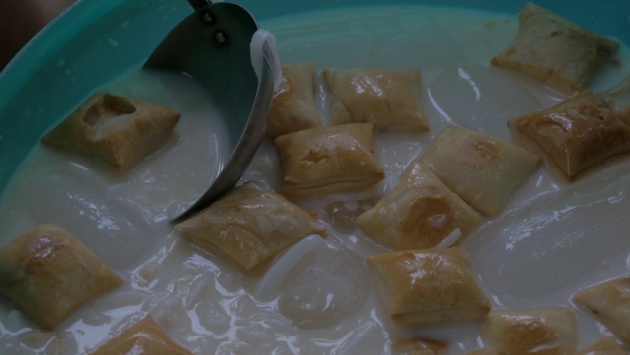
Image credits: Jean Beltran via bitLanders
Filipinos have a sweet tongue, we love sugar, we love desserts, we adore cakes and pastries, we have them in every single occasion, even the tiniest event would require us to sip on shakes and sweet drinks or munch on muffins and cupcakes. Aside from that, we Filipinos as well love to create simple but sugary treats. Look at Halo-halo, this what we refer to as the national dessert of the country, it has lots of sugar in it, it even has condensed milk and refined sugar included in the ingredients.
Today's blog, I am going to share with you a dessert which is very prevalent in the Visayas within the Philippines where I am located. I am not sure though if this is common as well in Mindanao and Luzon or if they call it differently over there, if anyone in Luzon or another part of the country is reading this, kindly let me know how you refer this and if this is very popular in your place.
The Coconut Abundance of the Philippines
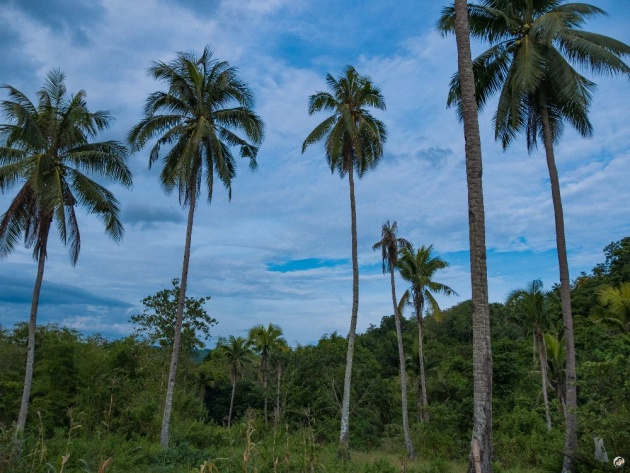
Image credits: Jean Beltran via bitLanders
Our country as a tropical one made it possible for these coconut trees to be popping out in any part of the country. Literally, any part of the Philippines has coconut trees, either planted by man or nature. In 2007, it has been declared that the country is the world’s largest Coconut producer.
A coconut tree is considered a tree of life due to the fact that from its tip to its roots, all its parts can be used to create a product. Its lifespan also can take about 60-80 years, it matures on its 10th year and it can live in three generations. This is also the reason why most of the grandfathers before would plant coconut trees for their future grandchildren to enjoy. This act has been very popular in the country at least in our area.
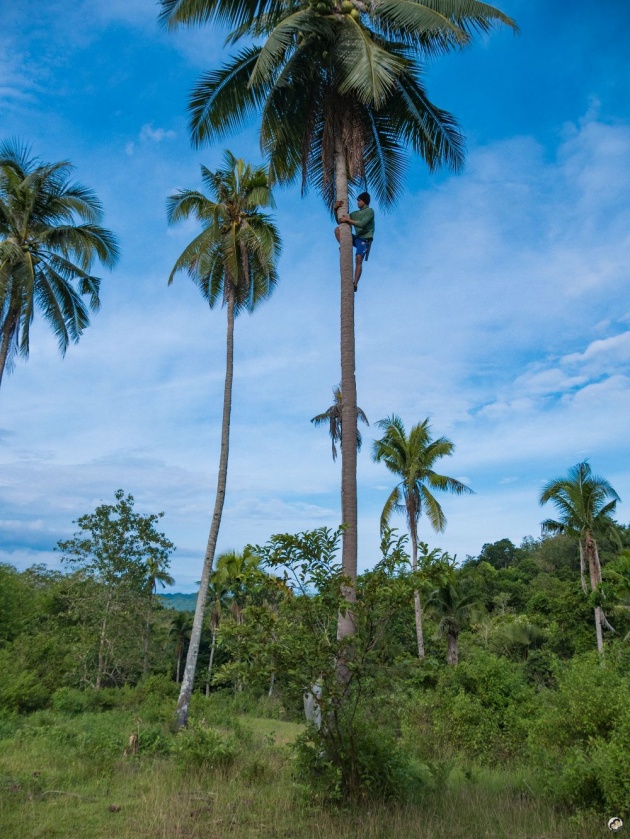
Image credits: Jean Beltran via bitLanders
It is safe to say that every Filipino who lives in the Philippines knows what a Coconut tree looks like and what "Buko" is.
Perhaps I will create a separate blog talking about the Coconut as the Tree of Life, providing the uses of every single part of the tree. For now, let's just focus on the dessert first.
What is "Lamaw"?
It is weird that the Bisayas have a single term which equates to two different things. The word "Lamaw" can be used to refer combinations of different food scraps or leftover food which had been accumulated in a container for the purpose of either throwing away or to feed hogs or pigs raised in a household, the latter is usually the main reason. The hog raisers would usually mix it with other feeds and then will be given to the animals in their backyard or even under the house for those living in Bahay Kubo.
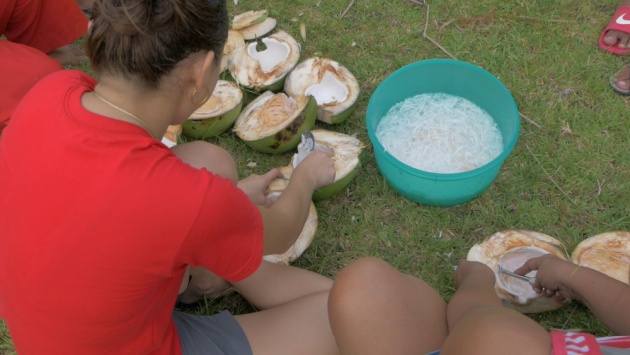
Image credits: Jean Beltran via bitLanders
The second usage of the word "Lamaw" means a dessert specifically that which deals with the juice and scraped meat of young coconut fruits mixed with condensed milk, Royal Tru Orange Soda, sugar (optional) and biscuits with lots of ice. Whenever someone from the Visayas says "Manglamaw ta", everyone already knows that he or she is referring to the dessert and not the one for the hogs. Some would even add Buko Lamaw to further make sure he is referring to the right dessert.
For the origin as to how we had come up with the term, I really don't know, I asked my parents about it but they as well were not sure. They say they had been using the term since they were children and never really asked their grannies about its history.
How to Make Buko Lamaw?
Buko Lamaw is best for afternoon snacks but it can also be served on any occasion however because it is cheap to make, most would just prepare it out of an impromptu craving. That hot afternoon which makes one's throat ask for a cold treat is a perfect time to make it together with the family and close friends.
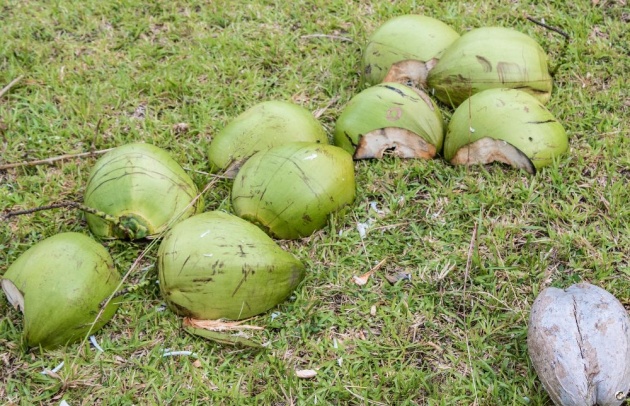
Image credits: Jean Beltran via bitLanders
Last week when James and I were in Bohol, my brother who just arrived from the United Arab Emirates asked if we can have Buko Lamaw because he has been craving for it for years, obviously, there are no Buko in the Middle East. And so I agreed and told him we'll do it in the afternoon.
On Sunday afternoon, the family went to a pawned land which has lots of coconut trees. The caretaker Edward had already been advised prior to the plan a few days ago. From the main highway, we had to walk a few minutes amidst the grassy and almost forest part of our town, where wild monkeys exist and would eat fruits of the plants planted by the caretaker.
Video credits: Jean Beltran via bitLanders
Watch the video above showing how our trekking went. Here are the steps in making the Buko Lamaw:
First, someone has to harvest young coconut fruits.
This is a challenging one for those who are not familiar with the age of a coconut fruit. But locals and farmers are already used to this, by simply knocking on the fruit and listening to the sound it produces, they'd easily know if this is still a young fruit which is good for the dessert or if it is already a mature one which is not that very pleasing for it.
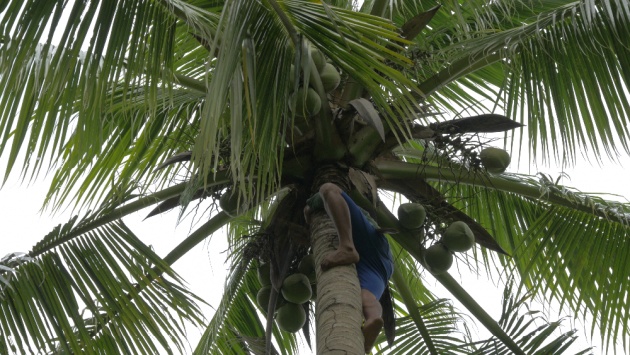
Image credits: Jean Beltran via bitLanders
Edward climbed a few coconut trees, dropped few of the fruits down which I had captured in the video above and brought it into the open ground.
When doing so, it is very important not to sit under a coconut tree, when a fruit gets mature, it has the tendency to drop itself and if it hit someone's crown, it may cause severe pain, in some cases, instant death.
Second, opening the coconut fruit and taking the juice out.
Video credits: Jean Beltran via bitLanders
There's a special way of opening the fruit so that the juice can be safely taken into the container. With a use of a bolo knife, a sharp one is required to easily open it, Edward hit the end part of the Buko, making sure it won't hit his hand but also allowing a small opening of the fruit just for the juice to be extracted.
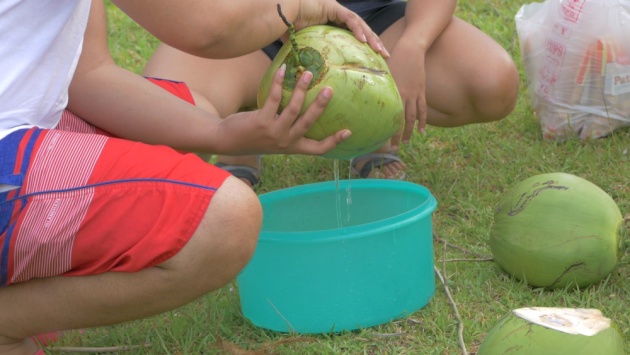
Image credits: Jean Beltran via bitLanders
It only took a few hits and the juice, as well as a small part of the flesh, is visible. Tasting the juice is normal by either directly drinking from the opening just like how we do it or taking a cup and filling it up which has the tendency of wasting some juice which we don't want to happen.
Third, scraping the Buko meat out.
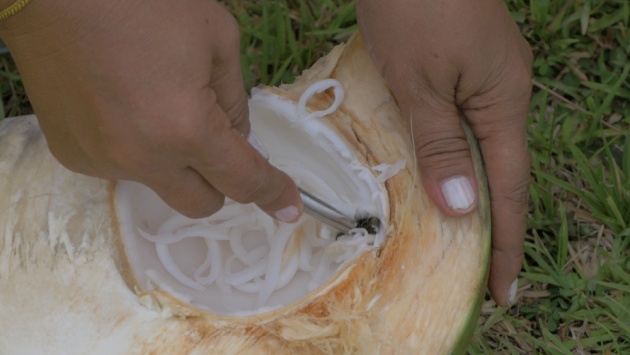
Image credits: Jean Beltran via bitLanders
Right after the juice has been taken out, Edward to cut the fruit open in half for us to scrape the meat. This process requires a special spoon intentionally made for it. "Kuskos" is a Bisaya term for scraping the meat out with the use of the Buko Scraper.
It is important to only scrape the meat and not include the husk part because that is a bitter part of the fruit. With the Buko meat soft and young, it is very easy to scrape them and place it into the container which already has the juice.
Fourth, mixing all ingredients.
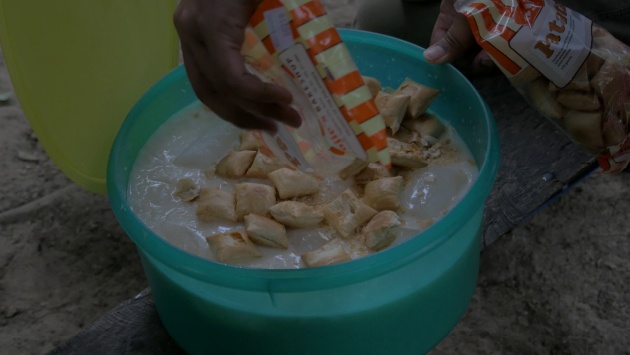
Image credits: Jean Beltran via bitLanders
Once the Buko juice and scraped meat are ready, the rest of the ingredients can be combined now. In Cebu City when James and I crave for Buko Lamaw, we would often buy young coconut fruits from the vendors and that takes out steps one to three, we would normally accept the ready juice and meat when buying.
But since we were in Bohol and the Buko fruit has to be harvested from the main tree, we have to go through the method.
Combining all ingredients is pretty easy, no specific measurements are required, we have to only mix and do a taste test to check if it is already sweet. Ice cubes have to be added to make the dessert cold or one can also bring the container back home and place it in a fridge.
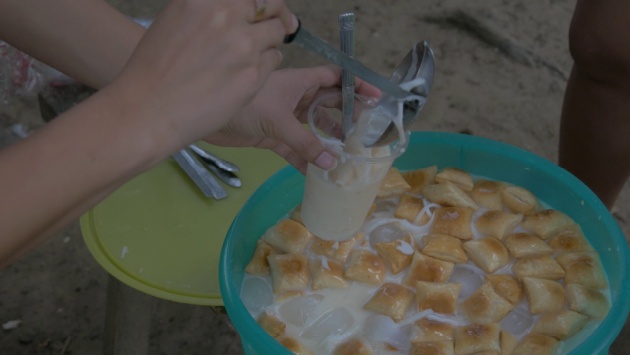
Image credits: Jean Beltran via bitLanders
And our Buko Lamaw dessert is now ready! Our cravings have been filled, our bodies refreshed and the rush of sweet juice fills our stomachs!
This blog entry was written and published by Jean Beltran-Figues for bitlanders.com.
Join me, click here to sign up.



